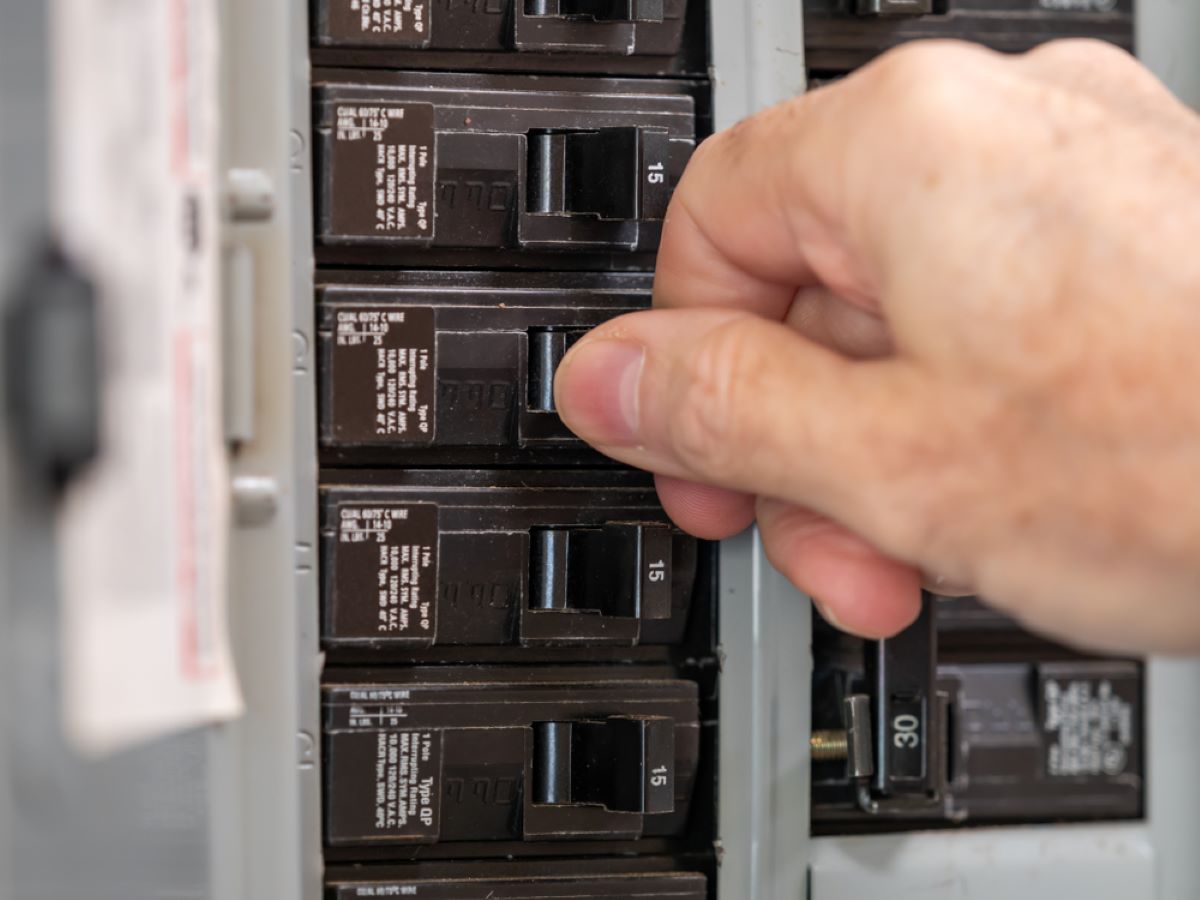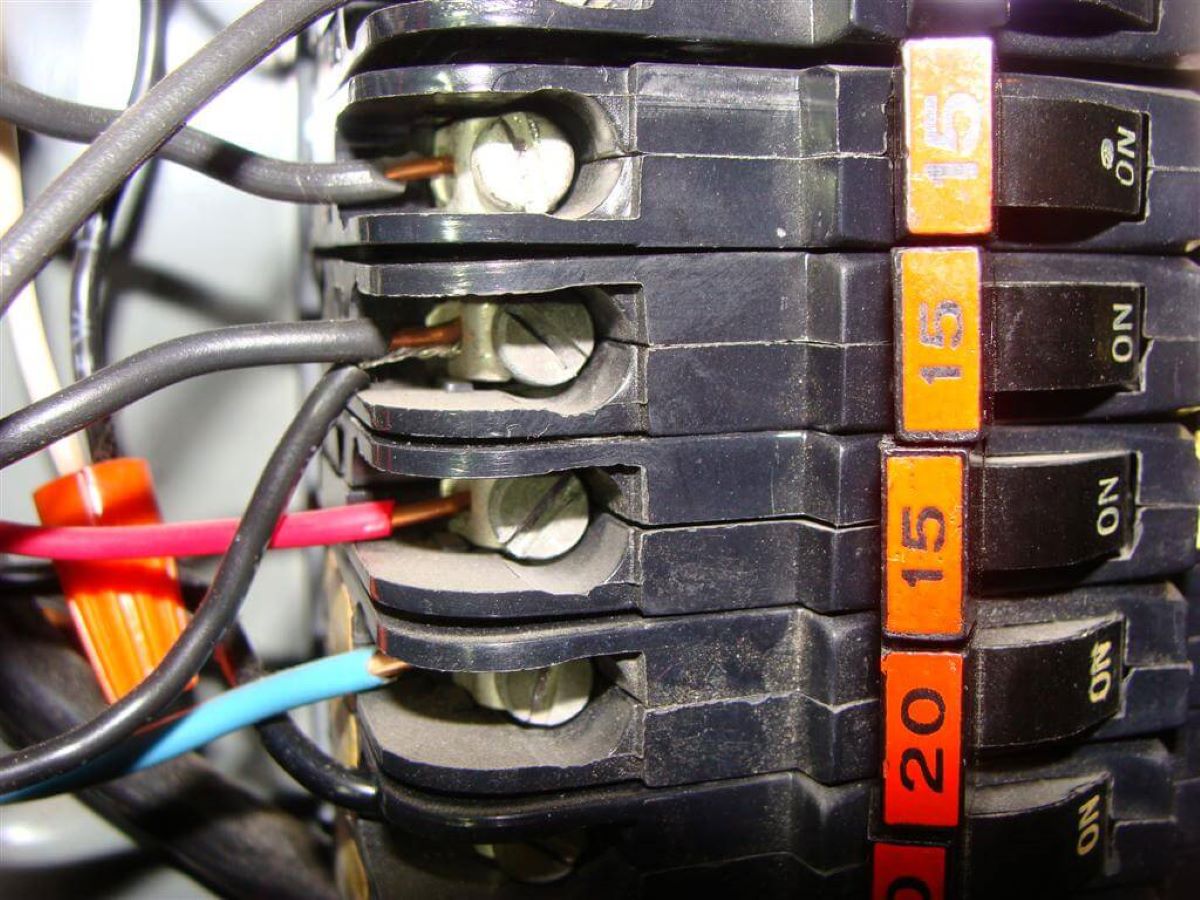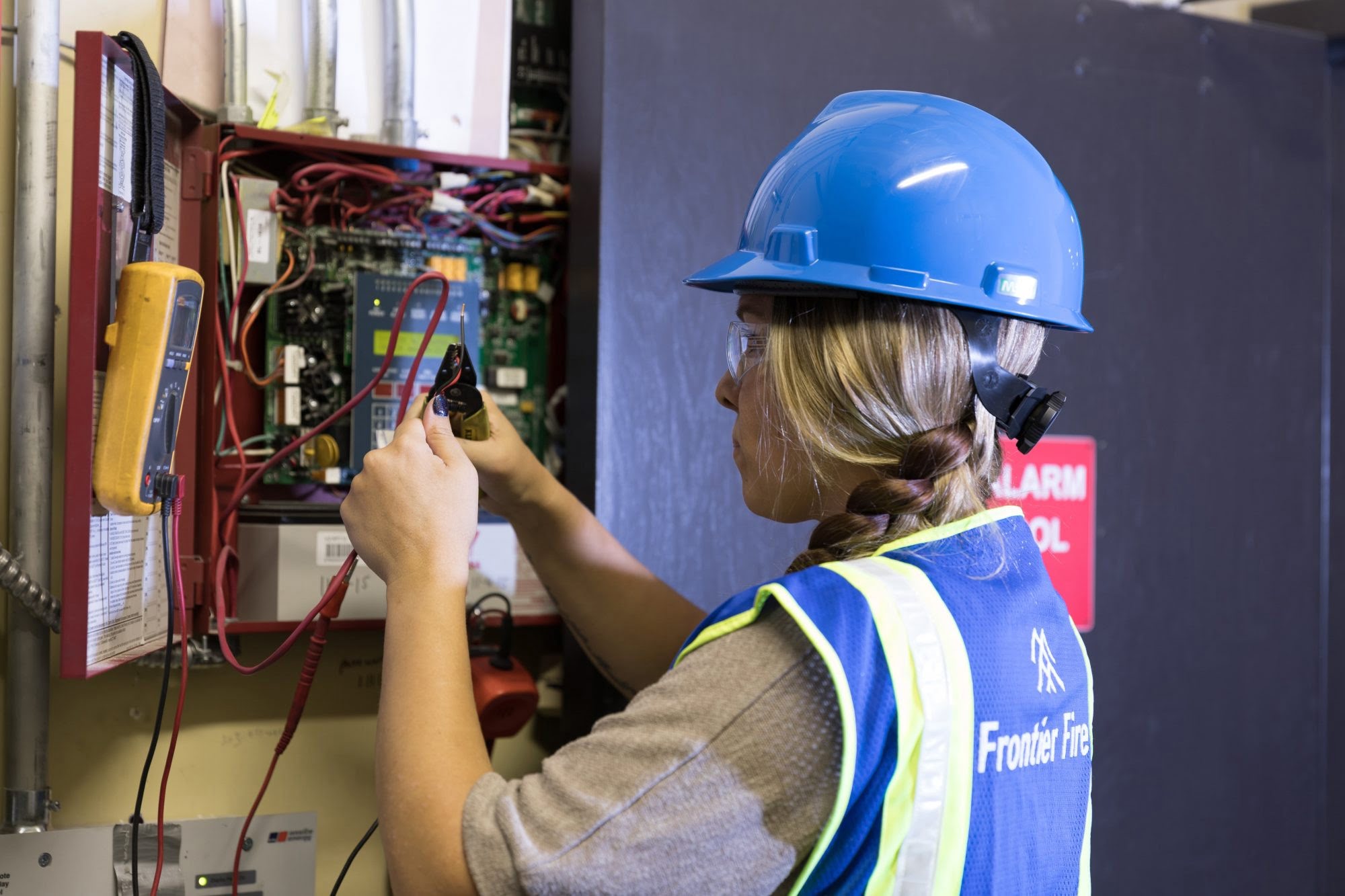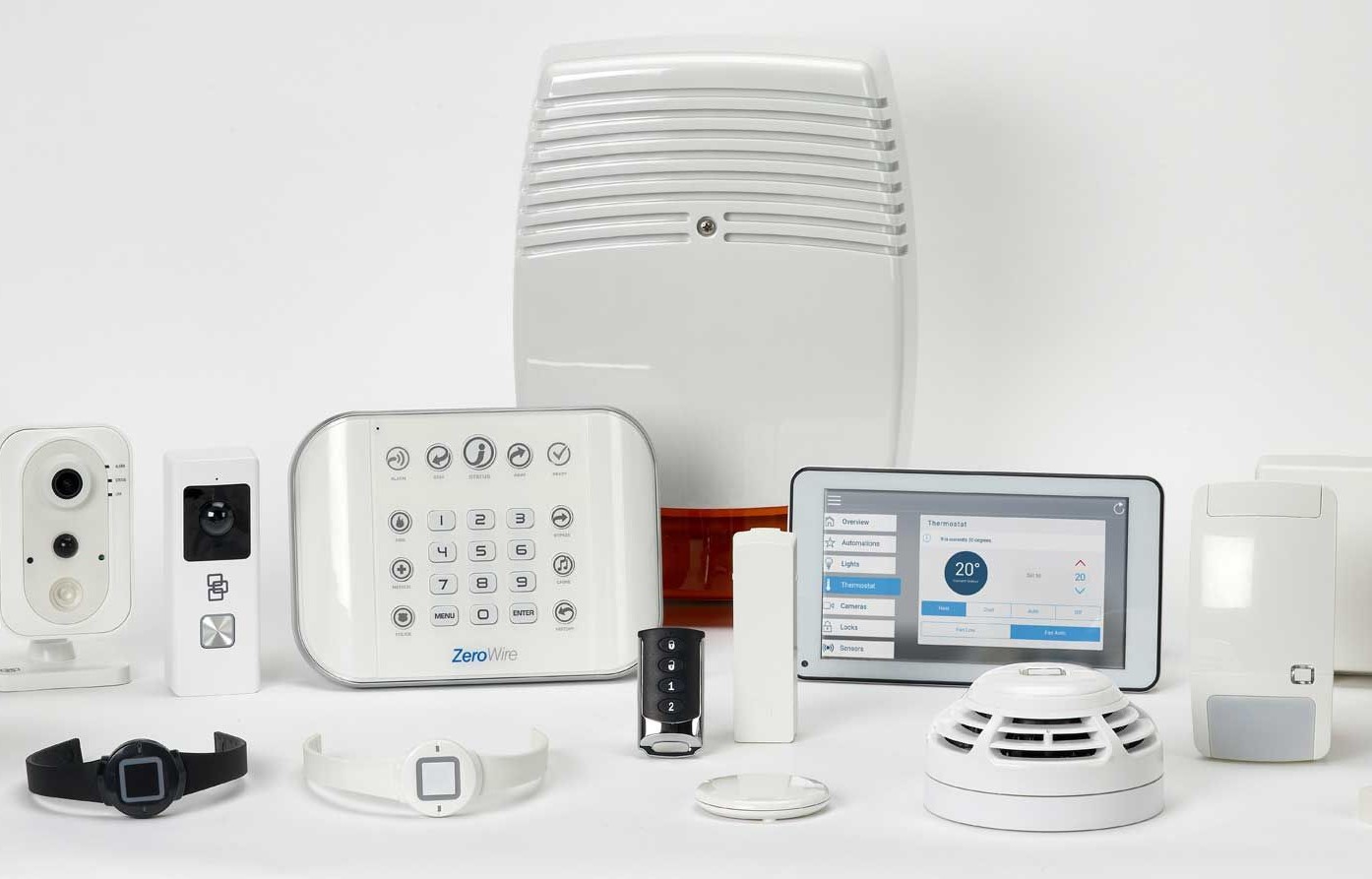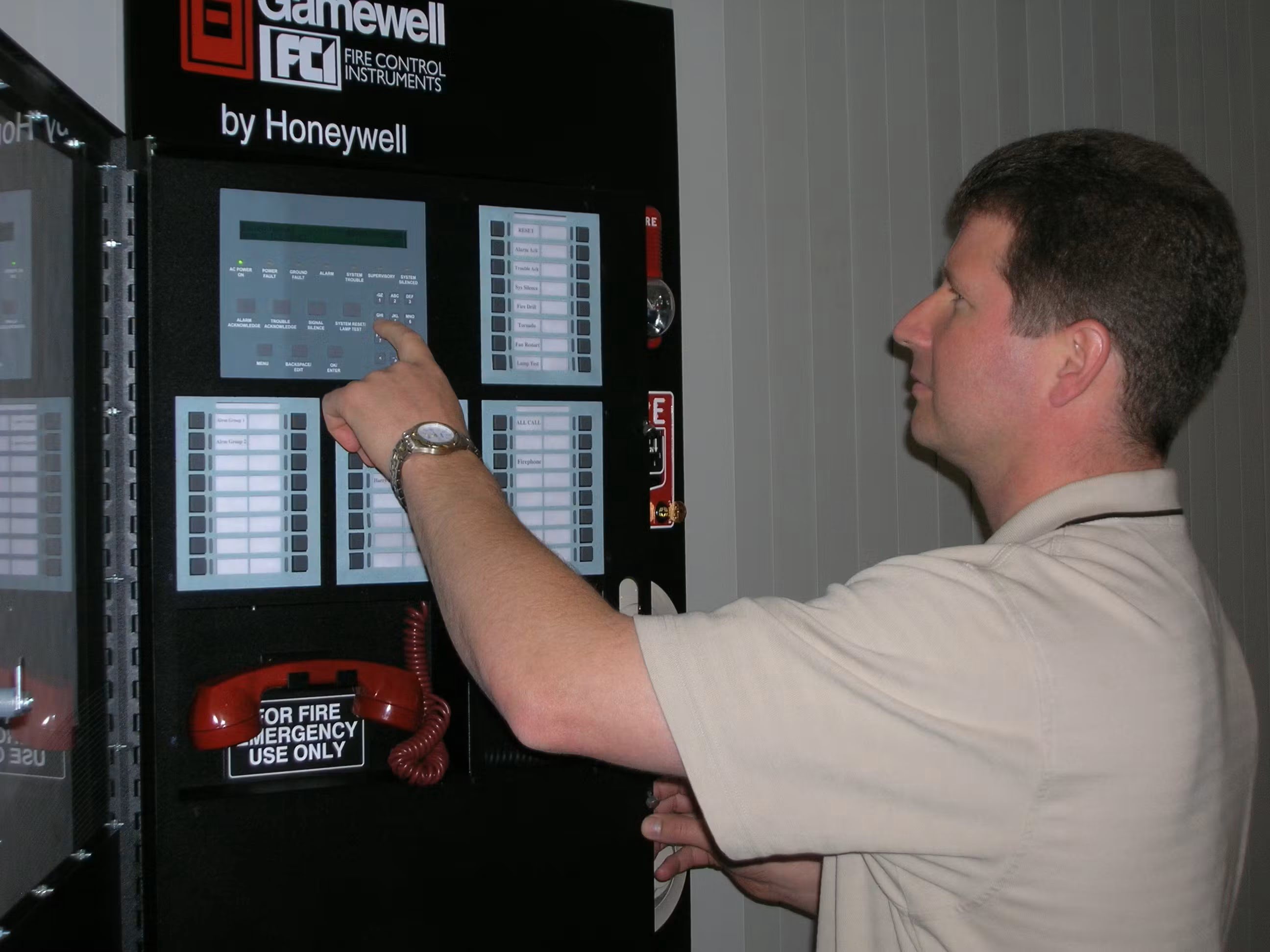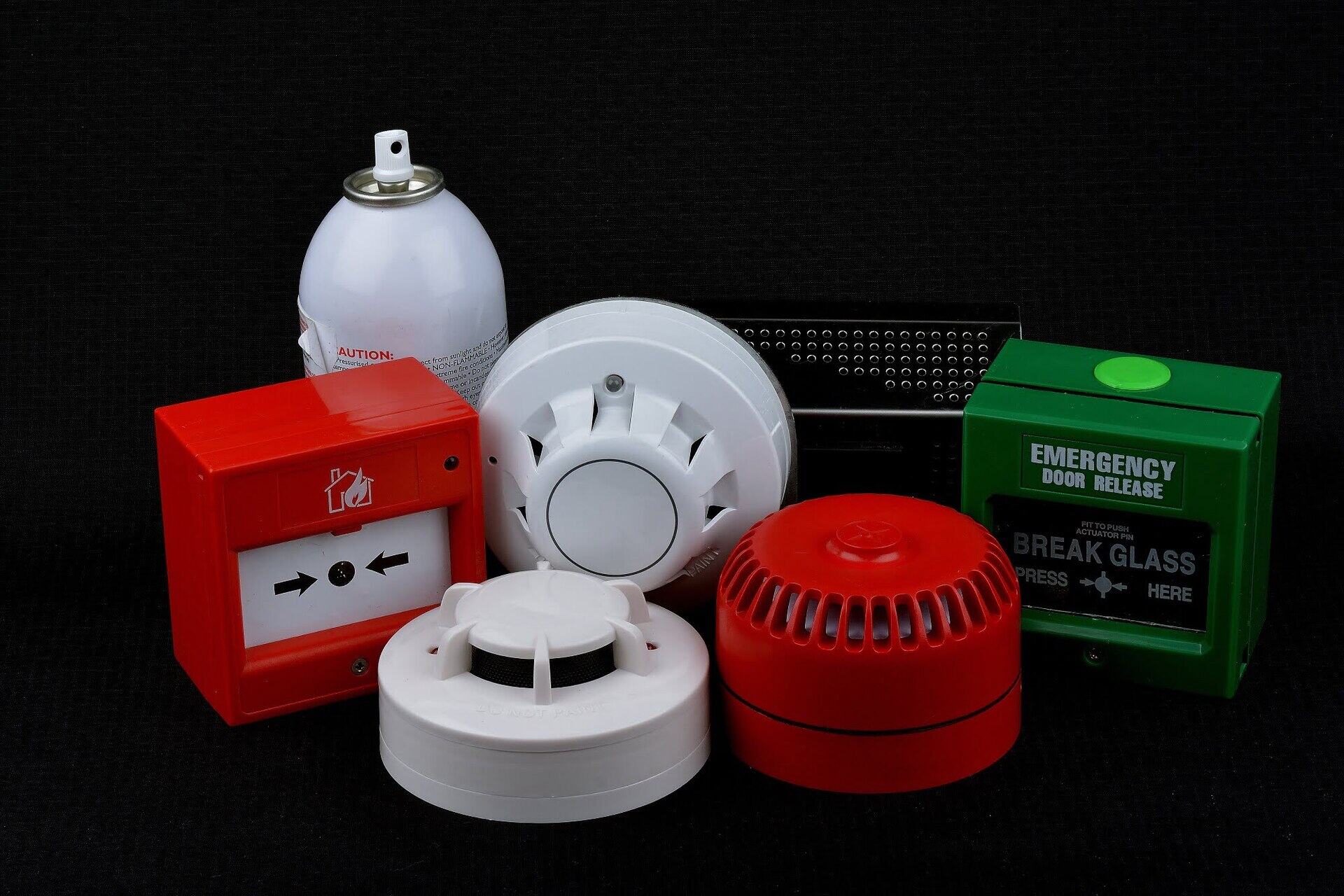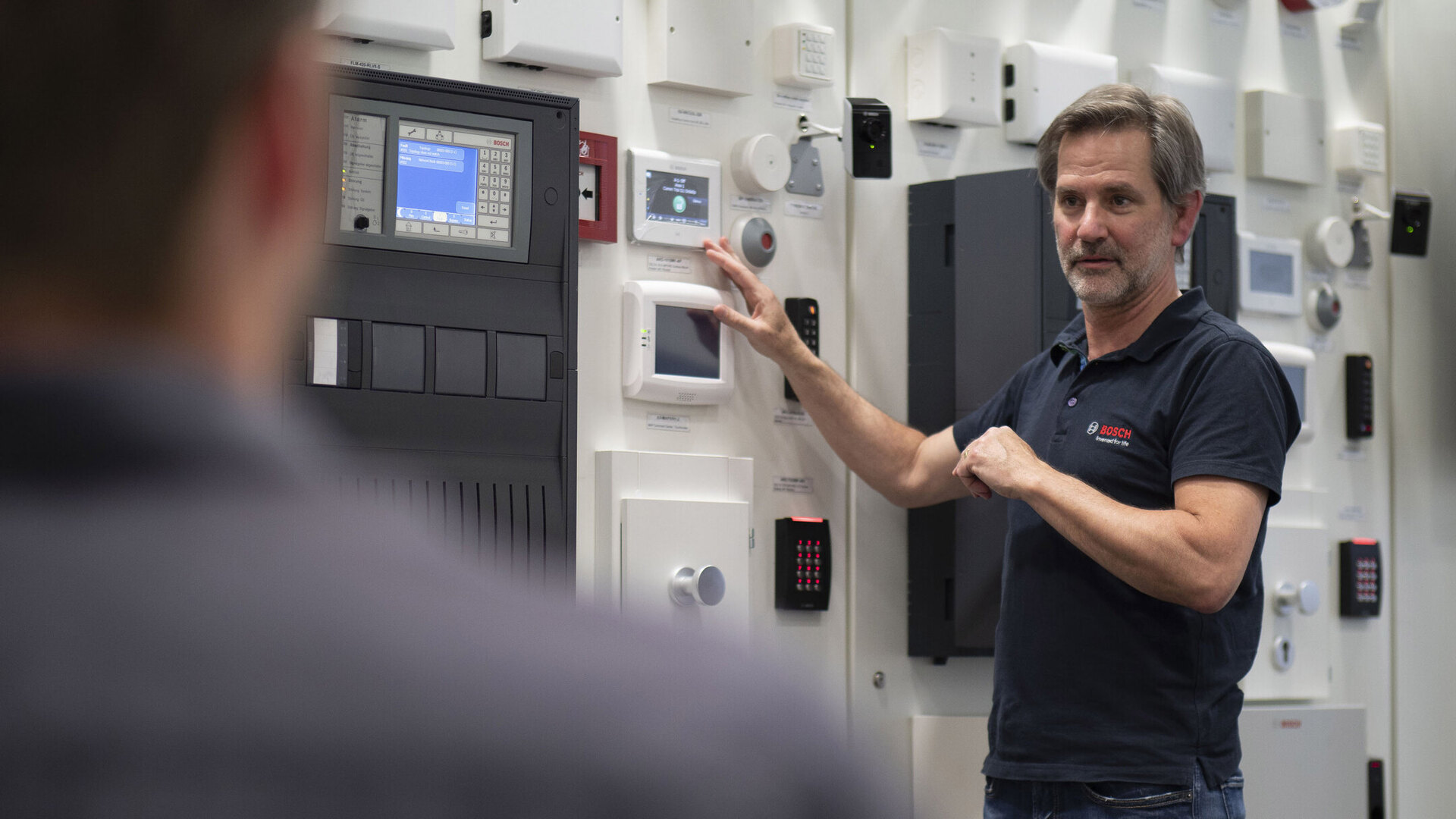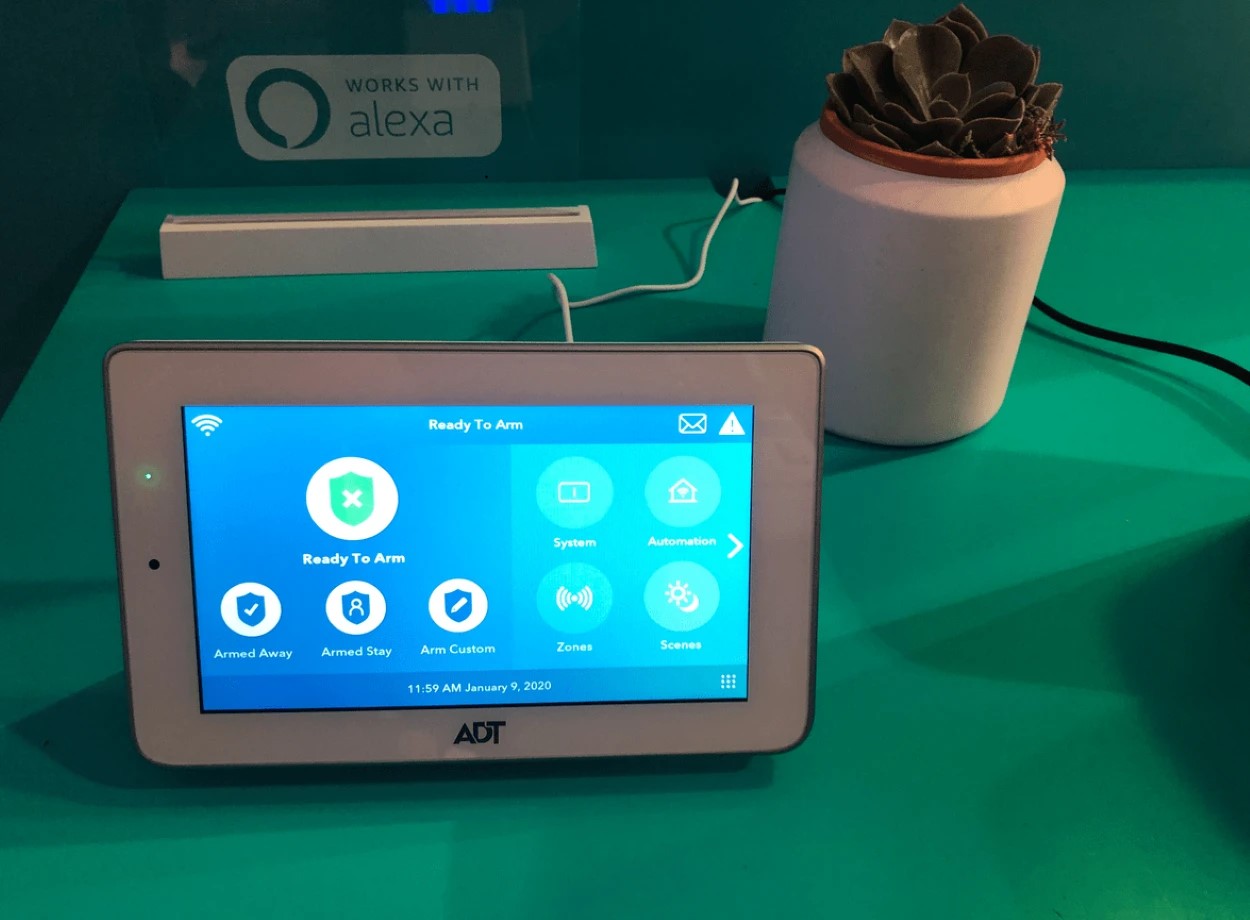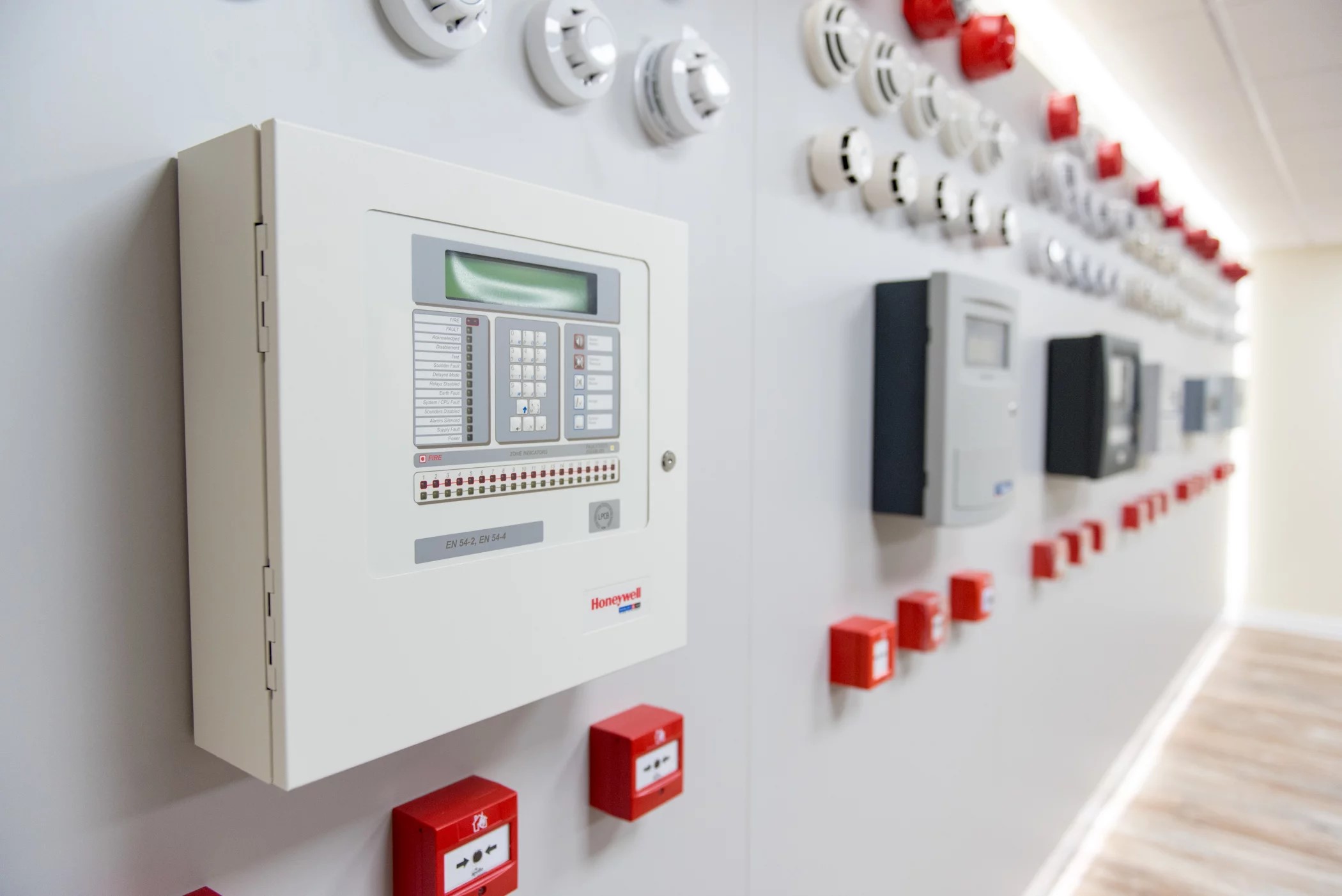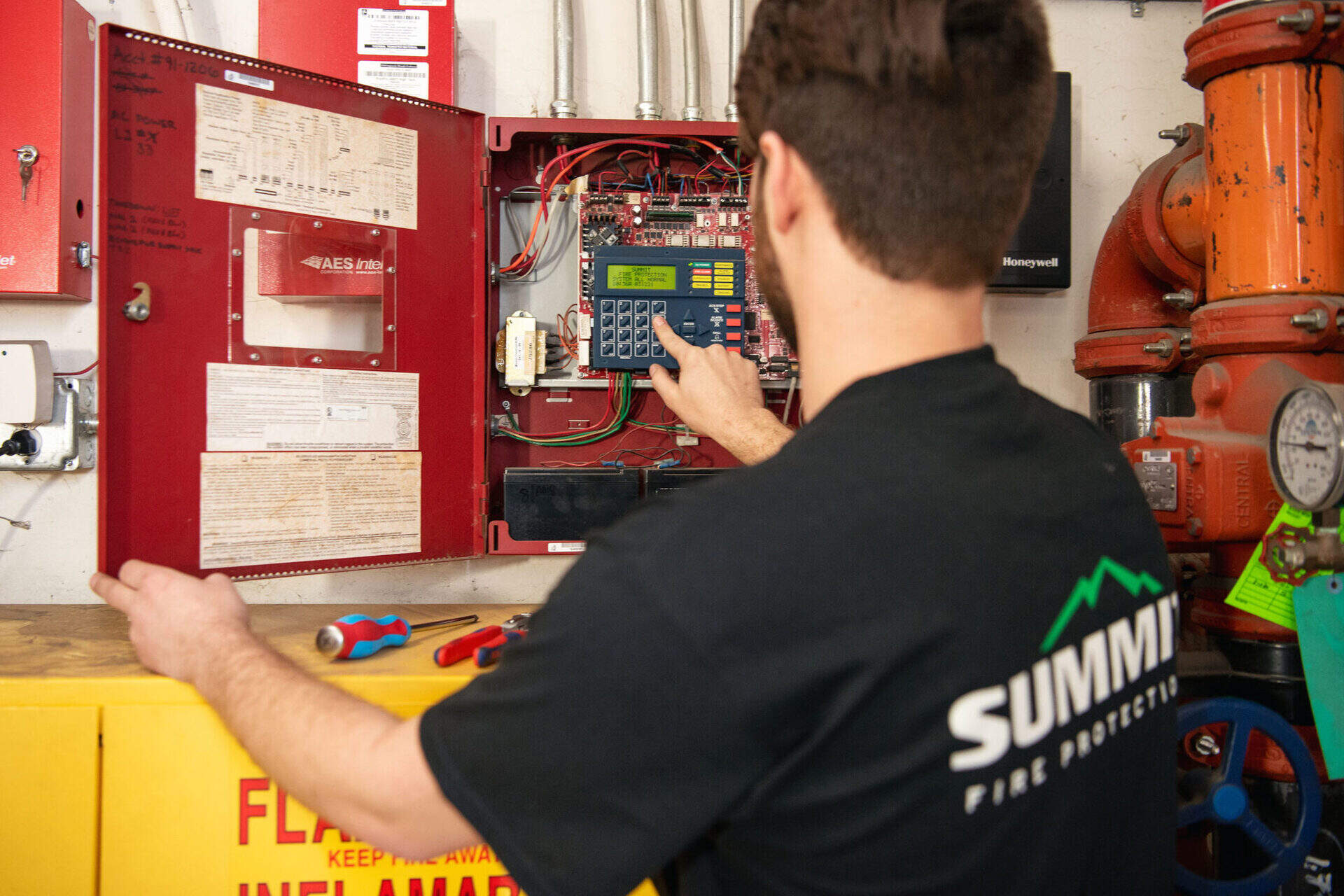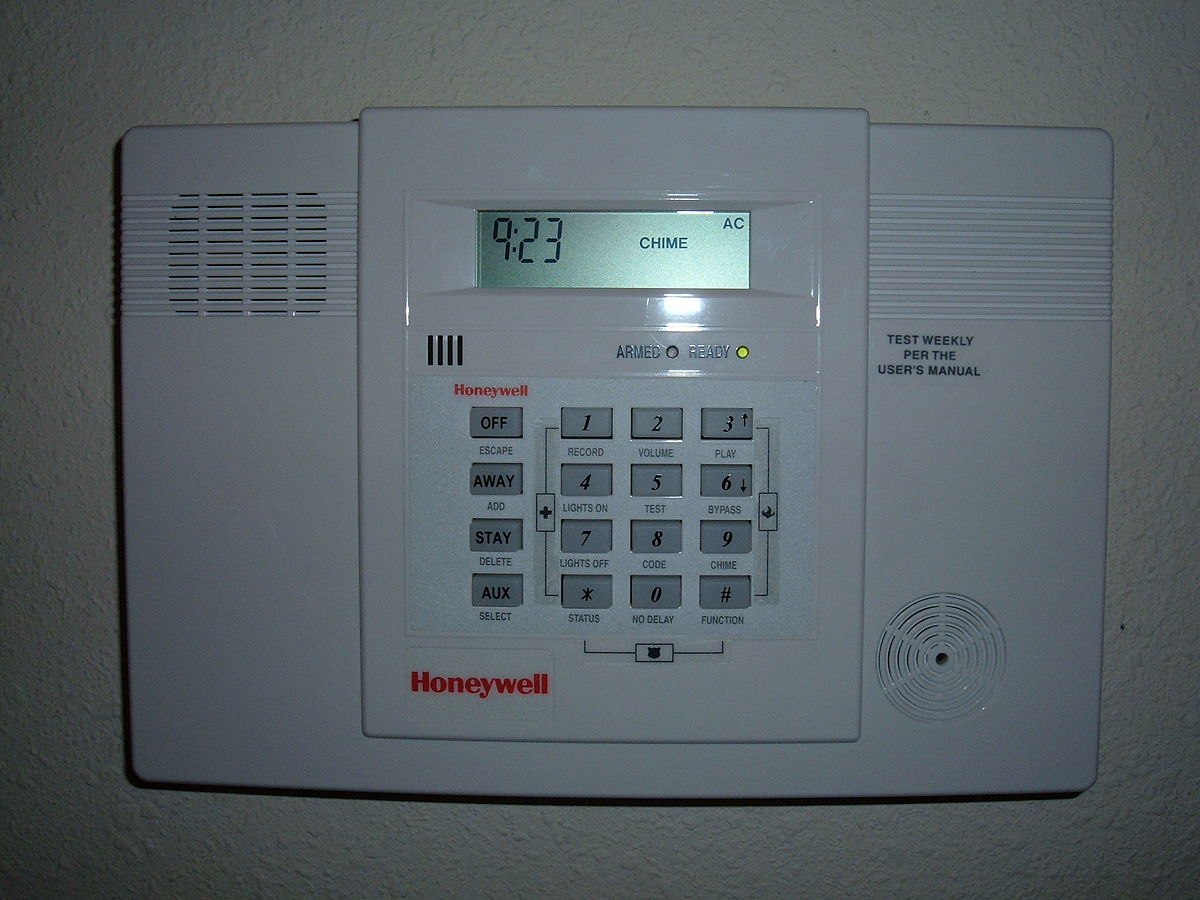Home>Home Security and Surveillance>Which Circuit Can Be Tapped On Fire Alarm Systems
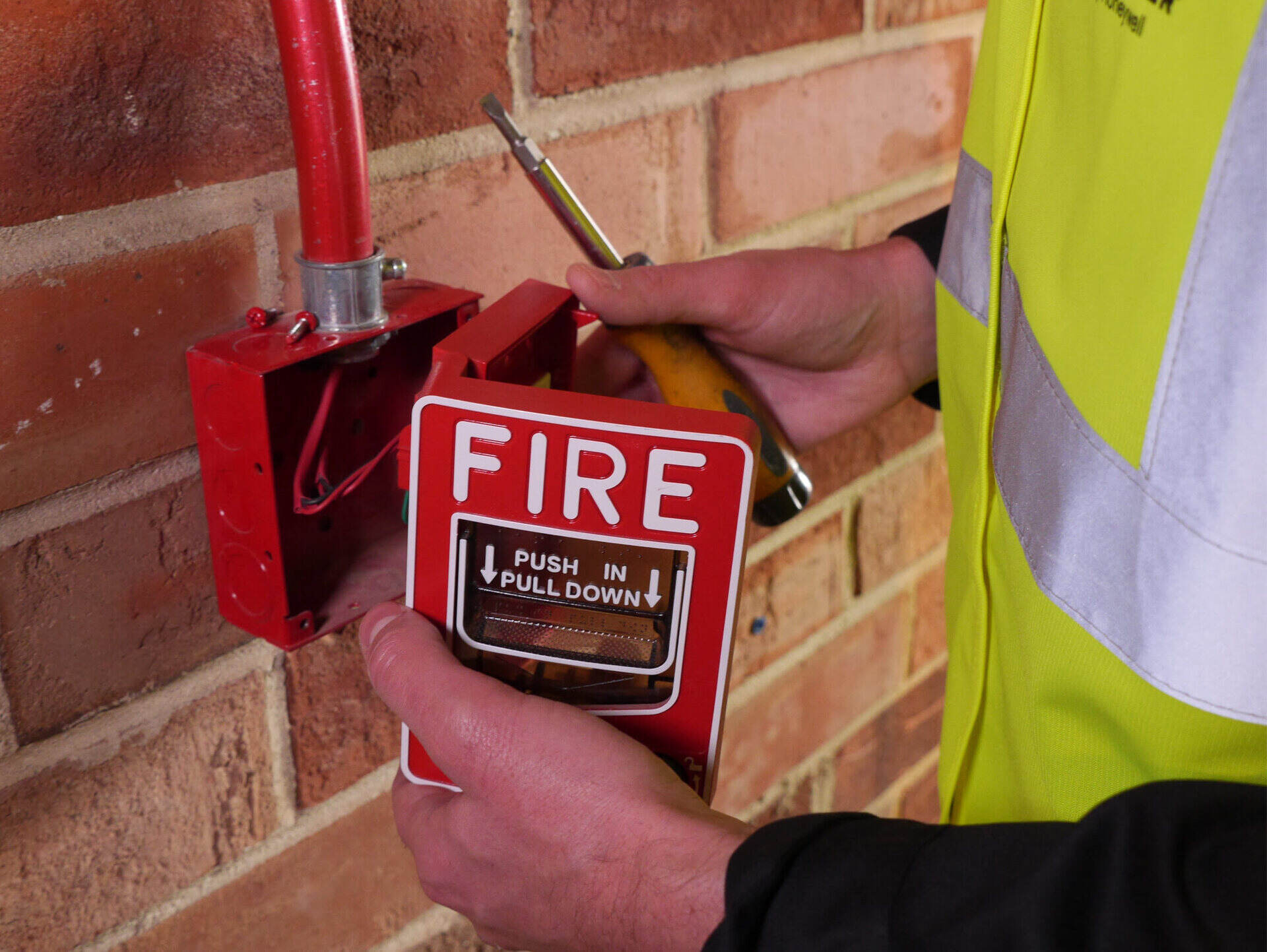

Home Security and Surveillance
Which Circuit Can Be Tapped On Fire Alarm Systems
Modified: March 6, 2024
Learn about the circuit that can be tapped on fire alarm systems for enhanced home security and surveillance. Install and protect your property with the right system today.
(Many of the links in this article redirect to a specific reviewed product. Your purchase of these products through affiliate links helps to generate commission for Storables.com, at no extra cost. Learn more)
Introduction
Welcome to the world of fire alarm systems, where safety and security are paramount. In this article, we will explore the different circuits that make up a fire alarm system and discuss their functions. Understanding how these circuits work is essential in ensuring the effectiveness of your fire alarm system and the protection of lives and property.
A fire alarm system is a network of interconnected components that detect and alert occupants of a building in the event of a fire. These components work together to detect smoke, heat, or other signs of a fire, and to activate various safety measures, such as sounding alarms, initiating sprinkler systems, and notifying emergency services.
Within a fire alarm system, there are several circuits that play different roles in the overall functionality of the system. Each circuit serves a specific purpose and is crucial for the proper operation of the system. Let’s explore these circuits in more detail:
Key Takeaways:
- Fire alarm systems have different circuits, like the primary and secondary circuits, which work together to detect fires and ensure safety. Regular testing and maintenance are crucial for their reliability.
- Understanding the purpose of each circuit, such as the power circuit and communication circuit, helps building owners create a robust and reliable safety infrastructure for effective fire event response.
Read more: Who Designs Fire Alarm Systems
Primary Fire Alarm Circuit
The primary fire alarm circuit, also known as the initiating circuit, is responsible for detecting a fire or a fault condition within the system. This circuit consists of various devices, such as smoke detectors, heat detectors, and manual pull stations, which are strategically placed throughout the building.
When a fire or fault condition is detected by any of the devices connected to the primary fire alarm circuit, they send a signal to the fire alarm control panel (FACP). The FACP then processes the signal and activates the appropriate response, such as sounding alarms, activating sprinkler systems, and initiating the notification appliances.
It is important to note that the primary fire alarm circuit is typically supervised, meaning that any open or short circuit conditions are monitored by the control panel. This ensures that the system is always functional and ready to respond to any fire event.
The devices connected to the primary fire alarm circuit can be further categorized into two types: automatic and manual. Automatic devices are designed to detect a fire condition autonomously, without any human intervention. This includes smoke detectors and heat detectors, which are sensitive to changes in air quality and temperature that signify a fire. On the other hand, manual devices, such as manual pull stations, require human intervention to activate them and initiate an alarm.
In some cases, the primary fire alarm circuit may also incorporate capabilities for monitoring other critical systems, such as elevator recall, emergency lighting, and HVAC shutdown. This integration ensures a comprehensive response in the event of a fire, protecting not only the occupants but also other vital systems and infrastructure within the building.
The primary fire alarm circuit is the backbone of the fire alarm system, playing a crucial role in the early detection and response to fire events. It is essential to ensure regular maintenance and testing of this circuit to guarantee its reliability and effectiveness when it matters most.
Secondary Fire Alarm Circuit
In addition to the primary fire alarm circuit, a fire alarm system may also include a secondary fire alarm circuit. This circuit serves as a backup system and provides redundancy to ensure the reliability of the fire alarm system.
The secondary fire alarm circuit is designed to activate in the event of a failure or fault in the primary fire alarm circuit. It consists of duplicate or parallel wiring, connected to duplicate devices such as smoke detectors, heat detectors, and manual pull stations.
In a typical setup, the secondary fire alarm circuit is constantly monitored by the fire alarm control panel (FACP) to ensure its functionality and readiness. If the primary fire alarm circuit experiences a fault or disruption, the FACP automatically switches to the secondary circuit, allowing for uninterrupted detection and alarm capabilities.
The purpose of the secondary fire alarm circuit is to provide a backup system, ensuring that the fire alarm system continues to operate even in the event of a primary circuit failure. This redundancy is crucial for the safety of building occupants and the protection of property.
It is important to note that the devices connected to the secondary fire alarm circuit should mirror those connected to the primary circuit to maintain consistency in detection and alarm capabilities. Regular testing and maintenance of both the primary and secondary circuits are essential to ensure their proper functioning and readiness in case of an emergency.
The secondary fire alarm circuit should be installed in accordance with the applicable fire codes and standards. This ensures that the fire alarm system meets the necessary safety requirements and provides reliable protection.
By incorporating a secondary fire alarm circuit into the overall fire alarm system design, building owners and occupants can have peace of mind, knowing that there is a backup system in place to detect and respond to fire events, even in the event of primary circuit failure.
Supervisory Circuit
In a fire alarm system, the supervisory circuit plays a critical role in monitoring and supervising various non-fire related functions, ensuring the overall safety and proper functioning of the system.
The supervisory circuit is responsible for monitoring the status of equipment and systems that are essential for the proper operation of the building, such as fire pumps, water flow switches, sprinkler system valves, and emergency power supply systems. It also monitors other critical functions, including elevator recall, emergency lighting, and pressurized stairwells.
Unlike the primary and secondary fire alarm circuits, the supervisory circuit is not activated by the detection of fire or fault conditions. Instead, it constantly supervises the operational status of these equipment and systems to ensure they are functioning within the expected parameters.
If a fault or loss of supervision is detected within any of the devices or systems connected to the supervisory circuit, an alarm signal is sent to the fire alarm control panel (FACP). The FACP then alerts the building management or responsible personnel so that appropriate action can be taken to address the issue.
Examples of devices connected to the supervisory circuit include water flow switches, which detect a decrease or loss of water flow in the sprinkler system, indicating a potential issue. Similarly, pressure switches may be connected to monitor the pressure in the fire suppression system.
This circuit is particularly important in high-rise buildings, where elevators are a critical means of egress. The supervisory circuit can initiate the recall of elevators to designated floors in the event of a fire, ensuring that they are available for use by the fire department and limiting their exposure to potential hazards.
Regular testing and maintenance of the supervisory circuit is crucial to ensure the reliability and effectiveness of the system. Building owners and managers should adhere to the applicable fire codes and standards to ensure that the supervisory circuit is designed, installed, and maintained according to the required specifications.
By including a supervisory circuit in the fire alarm system, building owners can have confidence that the critical non-fire related functions in their buildings are consistently monitored, providing an additional layer of safety and protection.
Notification Appliance Circuit
The notification appliance circuit (NAC) is a crucial component of a fire alarm system that is responsible for delivering audible and visual signals in the event of a fire or other emergency conditions.
The primary function of the NAC is to activate notification appliances, such as strobe lights, horns, sirens, and speakers, to alert building occupants of a potential danger and initiate the evacuation process. These appliances are strategically located throughout the building to ensure effective coverage and maximum visibility and audibility.
The NAC is typically connected to the fire alarm control panel (FACP) and is activated by signals received from the primary fire alarm circuit. When the FACP detects a fire or fault condition, it sends a signal to the NAC, which then activates the connected notification appliances.
It is important to consider the specific needs and requirements of the building occupants when designing the NAC. For example, visual strobe lights are essential for alerting individuals with hearing impairments, ensuring that all occupants receive timely and effective notifications in emergency situations.
In addition to fire-related events, the NAC can also be programmed to generate specific tones or messages for other types of emergencies, such as severe weather conditions or lockdown situations. This flexibility allows the fire alarm system to serve multiple purposes and enhance overall safety and security within the building.
Another important aspect of the NAC is its capability for zoning. Zoning allows different areas or zones within the building to be activated independently. This can be useful in larger buildings or campuses where specific areas may require immediate attention or evacuation while minimizing disruption to other areas.
Regular testing and maintenance of the NAC are essential to ensure that all notification appliances are functioning correctly and are audible and visible in critical areas. Building owners should adhere to the applicable fire codes and standards to ensure proper installation and operation of the NAC.
The notification appliance circuit is an indispensable part of a fire alarm system, providing essential signals to alert building occupants and facilitate a prompt and orderly evacuation. By ensuring the reliability and effectiveness of the NAC, building owners can enhance the overall safety and security of their premises.
When tapping into a fire alarm system, it’s important to use the notification appliance circuit (NAC) for connecting additional devices. Avoid tapping into the initiating circuit to ensure proper functionality of the fire alarm system.
Read more: When Are Fire Alarm Systems Required
Initiating Device Circuit
The initiating device circuit (IDC) is a critical component of a fire alarm system that connects various devices which are designed to detect and initiate the signaling of a fire or other hazardous conditions.
The IDC serves as the interface between the initiating devices and the fire alarm control panel (FACP), allowing the system to detect and respond to fire events in a timely manner. It consists of devices such as smoke detectors, heat detectors, flame detectors, and other specialized sensors that are strategically placed throughout the building.
When a fire-related event is detected by any of the initiating devices, they send signals to the FACP through the IDC. These signals are processed by the FACP, which then activates the appropriate response, such as sounding alarms, initiating sprinkler systems, or alerting emergency services.
The various types of initiating devices connected to the IDC have different detection mechanisms. For example, smoke detectors sense the presence of smoke particles in the air, while heat detectors measure the ambient temperature or rate of temperature rise. Flame detectors, on the other hand, detect the presence of flickering flames.
Additionally, the IDC also includes manual pull stations, which allow individuals to manually initiate an alarm by pulling a lever or breaking a glass panel. These manual devices are typically placed near exits and in easily accessible locations.
It is important to note that the IDC is often supervised, meaning that any open or short circuit conditions are continuously monitored by the FACP. This supervisory feature ensures the integrity and reliability of the initiating device connections.
Regular testing and maintenance of the IDC are crucial to ensure the proper functioning and responsiveness of the fire alarm system. Building owners should follow the relevant fire codes and standards to ensure proper installation, operation, and maintenance of the IDC.
By incorporating a reliable and well-maintained initiating device circuit, building owners can have confidence in the early detection and identification of fire events, allowing for swift and appropriate responses to protect occupants and minimize property damage.
Power Circuit
The power circuit is an essential component of a fire alarm system that provides the necessary electrical power to ensure the proper functioning of the system. It supplies electrical power to the fire alarm control panel (FACP), notification appliances, initiating devices, and other crucial components of the system.
The power circuit can be powered by either direct current (DC) or alternating current (AC), depending on the specific requirements of the fire alarm system. It is important to note that the power circuit should be designed and installed according to the applicable codes and standards to ensure safety and reliability.
There are two main sources of power for the fire alarm system: primary power and secondary or backup power. Primary power is typically provided by the building’s electrical grid or main power supply. This ensures a continuous supply of power to the fire alarm system under normal operating conditions.
In the event of a power outage or failure, the secondary or backup power source, usually in the form of batteries or an uninterruptible power supply (UPS), kicks in. This backup power source is designed to provide emergency power to the fire alarm system, allowing it to remain operational until primary power is restored.
One of the critical functions of the power circuit is to monitor the state of the power supply and to generate an alarm signal if a power failure or fault is detected. This ensures that any power-related issues are promptly addressed to maintain the continuous operation of the fire alarm system.
It is important to regularly test and inspect the power circuit and backup power sources to ensure their proper functioning. This includes testing the batteries, inspecting wiring and connections, and verifying the voltage levels on a regular basis.
Additionally, the power circuit should also incorporate appropriate surge protection measures to safeguard the fire alarm system from voltage surges or disturbances. Surge protectors can mitigate the risk of damage to sensitive components and ensure the longevity of the system.
Proper maintenance and periodic inspections of the power circuit are essential to ensuring the reliable operation of the fire alarm system. Building owners should work closely with qualified professionals to adhere to the relevant codes and standards and to carry out routine maintenance activities.
By ensuring a robust and well-maintained power circuit, building owners can have confidence in the continuous and reliable operation of their fire alarm system, providing crucial protection in the event of a fire or emergency.
Communication Circuit
The communication circuit is a vital component of a fire alarm system that facilitates communication between various devices, panels, and external systems. It enables the exchange of essential information, signals, and data to enhance the functionality and effectiveness of the fire alarm system.
The communication circuit allows different panels, such as the fire alarm control panel (FACP), to communicate with each other and coordinate their actions. This is particularly important in large or complex buildings where multiple panels may be installed to cover different areas or zones.
In addition to panel-to-panel communication, the communication circuit also enables the connection of the fire alarm system with external systems and monitoring services. This includes connections to central monitoring stations, emergency services, and other building management systems, such as HVAC or access control systems.
One of the primary reasons for establishing a communication circuit is to enable remote monitoring and control of the fire alarm system. This allows authorized personnel to receive real-time alerts, view system status, and remotely control various functions of the system.
Many modern fire alarm systems utilize advanced communication protocols, such as TCP/IP, Ethernet, or wireless technologies, to ensure fast and reliable data transmission. These protocols facilitate quick and efficient transfer of information, improving the overall response time and effectiveness of the fire alarm system.
The communication circuit is also essential for performing system diagnostics, maintenance, and troubleshooting. Monitoring and diagnostic tools can be connected to the communication circuit to assess system performance, detect faults, and rectify issues promptly.
Regular testing and inspection of the communication circuit are vital to ensure its reliability and functionality. This includes verifying signal integrity, checking wiring connections, and testing communication interfaces and protocols.
Building owners should ensure that the communication circuit is installed and maintained in compliance with the relevant fire codes and standards. They should also work with qualified professionals to implement appropriate security measures to protect the communication circuit from unauthorized access or tampering.
By establishing a robust and reliable communication circuit, building owners can enhance the overall performance and capabilities of their fire alarm system. Effective communication and information exchange enable timely responses to fire events, better coordination with emergency services, and improved overall safety and security in the building.
Conclusion
Fire alarm systems are crucial for ensuring the safety and security of buildings and their occupants. Understanding the different circuits that make up these systems is essential in comprehending their functionality and optimizing their effectiveness.
From the primary fire alarm circuit, which detects and initiates fire alarms, to the secondary circuit that provides backup in the event of a failure, each circuit plays a critical role in the overall operation of the system. The supervisory circuit monitors non-fire related functions, the notification appliance circuit activates audible and visual signals, the initiating device circuit detects fire events, the power circuit provides electrical power, and the communication circuit facilitates information exchange.
Regular testing, inspection, and maintenance of each circuit are essential to ensure their proper functioning. Adhering to relevant fire codes and standards and working with qualified professionals helps to ensure compliance and reliability.
By understanding and optimizing each circuit within a fire alarm system, building owners can create a robust and reliable safety infrastructure. Swift and effective response to fire events is critical for protecting lives, minimizing property damage, and facilitating the safe evacuation of occupants.
Investing in a well-designed and properly maintained fire alarm system, with optimized circuits, provides peace of mind and confidence in the safety of buildings. Building occupants can rest assured knowing that their safety is a top priority, and building owners can have confidence in their ability to comply with fire safety regulations.
In conclusion, the various circuits within a fire alarm system work together to provide early detection, rapid response, and effective notification of fire events. Understanding the purpose and functioning of these circuits is vital for ensuring the safety and security of buildings and their occupants.
Frequently Asked Questions about Which Circuit Can Be Tapped On Fire Alarm Systems
Was this page helpful?
At Storables.com, we guarantee accurate and reliable information. Our content, validated by Expert Board Contributors, is crafted following stringent Editorial Policies. We're committed to providing you with well-researched, expert-backed insights for all your informational needs.

